Dobre praktyki, Email Analytics
Dobre praktyki, Email Analytics
In today’s digital age, email has become a vital tool for businesses to connect with their customers. However, with the sheer volume of emails we receive every day, it’s easy for messages to get lost in the crowd. As a result, businesses are constantly seeking ways to ensure that their email marketing campaigns are being noticed and engaged with by their target audience.
One of the email campaign metrics businesses use is the click-to-open rate (CTOR). This metric measures the percentage of recipients who clicked on a link within an email compared to the number of recipients who actually opened the email.
But how relevant is this metric to the success of your email promotional campaigns? Does a high CTOR necessarily mean that your email marketing effort was effective in achieving its intended goals?
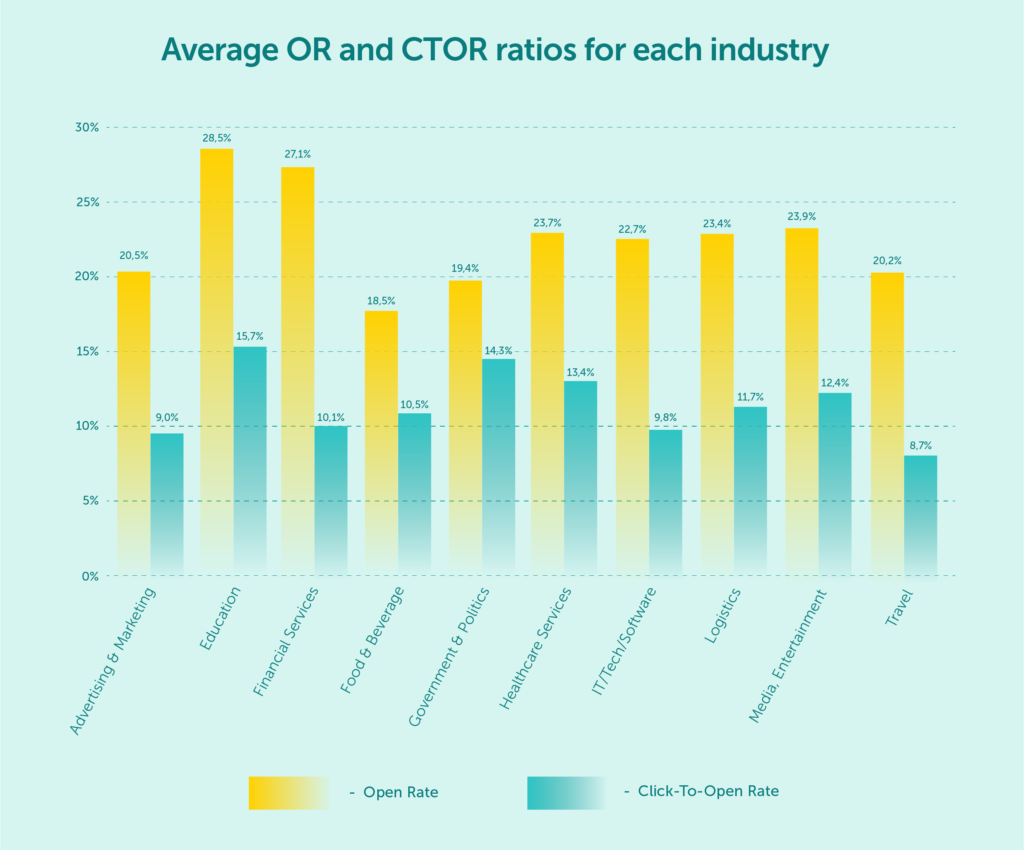
source: campaignmonitor.com
Maximize your email deliverability and security with EmailLabs!
In this article, we’ll explore the CTOR metric in-depth and discuss its limitations and potential pitfalls. We’ll also delve into some of the factors that can impact the click-to-open rate, such as the quality of your email content, the timing of your send, and the overall design and layout of your email.
Keep reading to learn more about CTOR and how it can help you make more informed decisions about your email marketing strategy.
CTOR stands for click-to-open rate. It’s one of the email marketing metrics that measures the percentage of email recipients who clicked on a link within an email compared to the number of recipients who actually opened the email.
To calculate CTOR, simply divide the number of clicks by the number of opens and multiply by 100. For example, if you sent an email to 1,000 recipients and 500 of them opened the email, but only 100 of those 500 clicked on a link inside the email, your CTOR would be 20% (100/500 x 100). It’s essential to include only unique opens and clicks in this equation.
While CTOR is a useful metric for measuring engagement within an email marketing campaign, it’s vital to note that it only tells a part of the story. CTOR does not measure the overall effectiveness of an email campaign, such as whether the email resulted in a conversion or increased sales. It simply measures the number of recipients who clicked on a link within an email compared to the number of recipients who opened the email.
While the click-to-open rate is a valuable metric for measuring engagement, it’s essential to understand its limitations. Here are some potential pitfalls to consider when interpreting CTOR data:
The click-to-open rate only measures clicks within an email. It doesn’t account for other types of interactions that could indicate engagement, such as forwarding the email, replying to the email, or adding the sender to the recipient’s address book.
These interactions can also indicate that the email marketing effort was relevant and valuable to the recipient.
The layout and design of an email can impact CTOR. For example, if the email contains multiple links or buttons, the recipient may click on more than one, which can artificially inflate the click-to-open rates.
On the other hand, if the email only contains one link or button, the CTOR may be lower even if the email was highly effective.
While CTOR measures clicks, it doesn’t measure conversions. A high click-to-open rate may indicate that recipients are clicking on links within the email, but it doesn’t necessarily mean that those clicks are resulting in a conversion or sale.
Unreliable open rates directly impact CTOR. It’s crucial to remember that, starting September 2021, Apple’s Mail Privacy Protection has caused email open data unreliable. Marketers can no longer ascertain if Apple Mail users have opened their emails, making CTOR less dependable.
Apple Mail Privacy Protection vs Open Tracking
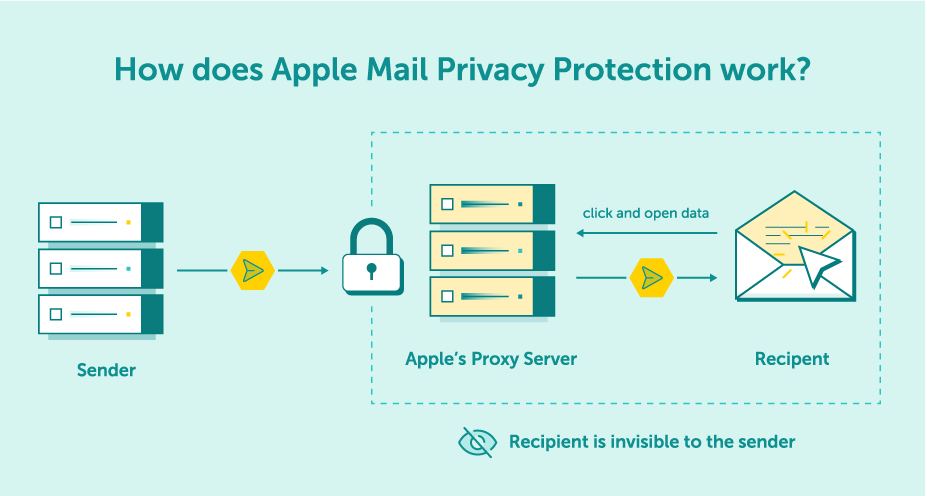
When a sender sends an email to an MPP user, Apple downloads remote content, including tracking pixels on its own servers. This action looks like opening the email, even though the end user may not have opened the message.
Maximize your email deliverability and security with EmailLabs!
Now that we’ve discussed the limitations of CTOR, let’s explore some of the factors that can impact this metric:
The quality and relevance of your email content can have a significant impact on CTOR. If your email is poorly written, doesn’t offer any value to the recipient, or is simply not relevant to their interests, they’re unlikely to click on any links within the email.
On the other hand, if your email is informative and beneficial to the recipient, they’re more likely to engage with it and click on links within it.
The timing of your email send can also impact the click-to-open rate. For example, if you send an email at a time when recipients are less likely to be checking their messages or only do it in a hurry, such as late at night or on weekends, they may be less likely to open or engage with the email.
The design and layout of your email may also influence CTOR. If your email is cluttered, difficult to read, or doesn’t draw the recipient’s attention to the links or buttons, they may be less likely to click on them.
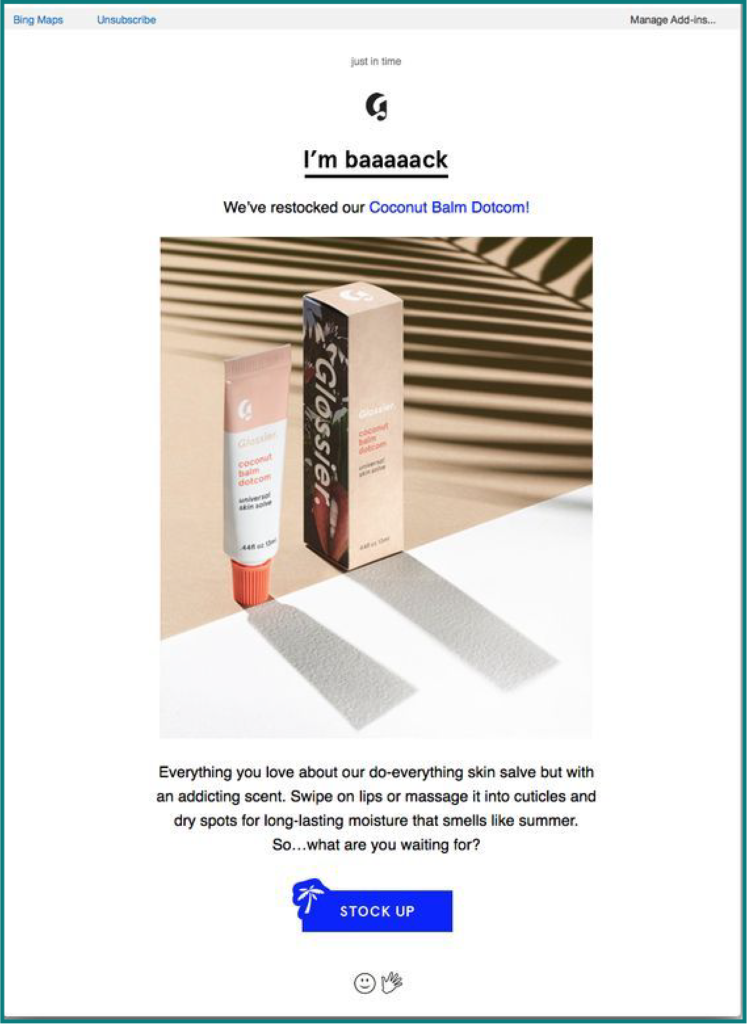
source: Pinterest
And so, if your email is visually appealing, easy to read, and draws the recipient’s attention to the links or buttons, they’re more likely to engage with the email and click on links.
Every element in the creative matters and contributes to the outcome of the indicators, including CTOR. This principle applies to both marketing emails and transactional messages.
How to Send On-Brand Confirmation Emails (with Examples)
The frequency at which you send emails to your subscribers can impact the click-to-open rates. If you send too many emails, your subscribers may become fatigued and start to ignore your messages, which can lead to a lower CTOR.
On the other hand, if you don’t send enough emails, your subscribers may forget about your brand or lose interest, which can also impact CTOR. It’s important to find the right balance and frequency of emails that works for your audience.
The quality of your email list can also impact CTOR. If your list contains invalid email addresses, spam traps, or inactive subscribers, it can lead to a lower click-to-open rate as your emails are less likely to reach the intended recipients. It’s important to regularly clean and update your email list to ensure that it’s up-to-date and accurate.
With more and more people accessing their email on mobile devices, it’s important to ensure that your emails are optimized for mobile. If they are not, they may be difficult to read or navigate on a small screen, which can impact CTOR. Make sure your emails are responsive and designed to look great on any device.
Now let’s explore some tips for improving this metric:
To improve CTOR, it’s crucial to write engaging email content that offers value to the recipient. This can include relevant and timely information, exclusive offers, or personalized content that speaks directly to the recipient’s interests.
To encourage clicks within your email, it’s important to use clear and compelling CTAs. Make sure your CTAs stand out visually and use language that encourages action, such as “click here to learn more” or “get your free trial now.”

source: Pinterest
Your email design should be visually appealing and draw the recipient’s attention to the links or buttons. Use a clean and simple layout with plenty of white space to make the email easy to read, and choose contrasting colors for the CTAs to make them stand out.
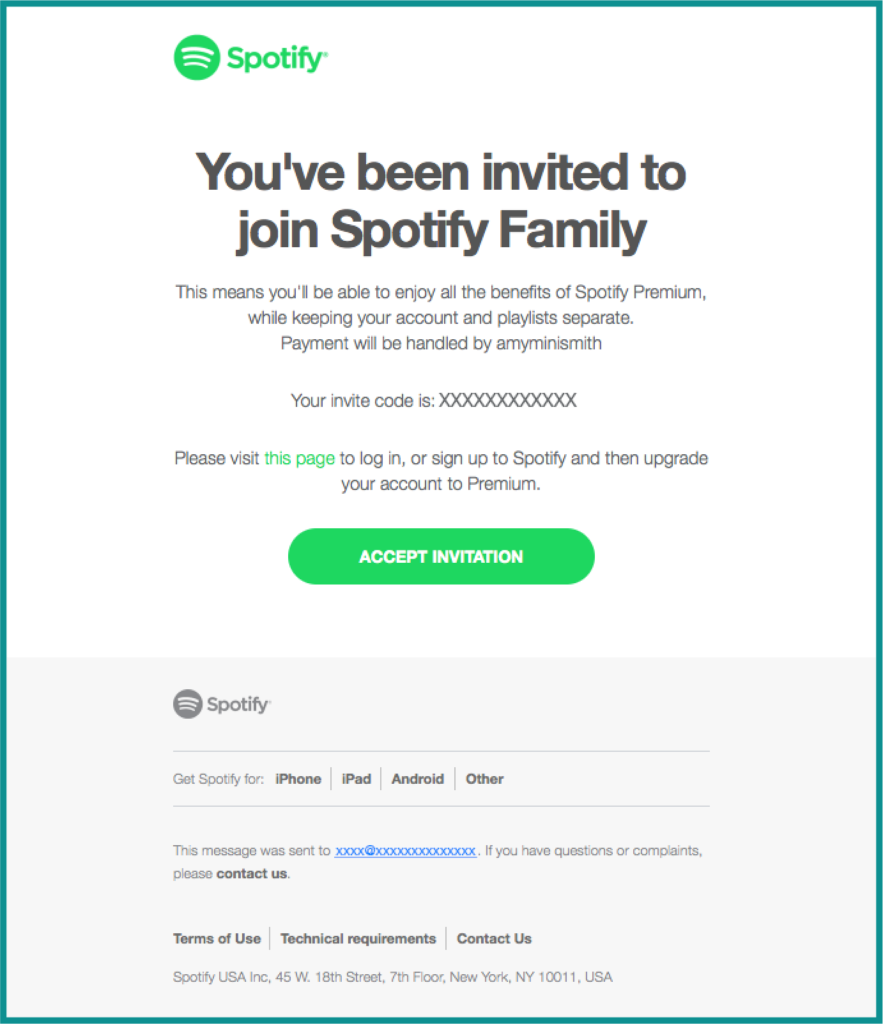
source: Pinterest
To improve the click-to-open rate over time, it’s vital to test and refine your email marketing campaigns. This can include testing different subject lines, email content, CTAs, and sending times to see what works best with your audience. Use A/B testing to compare the performance of different elements within your email campaigns, and use the results to refine and improve your approach.
Segmenting your email list can help improve CTOR by ensuring that your emails are more relevant to each recipient. By grouping recipients based on their interests, behavior, or other characteristics, you can tailor your email content and CTAs to better meet their needs and interests.
Maximize your email deliverability and security with EmailLabs!
Social proof can help increase the credibility of your email content and encourage recipients to click on your CTAs. This can include customer reviews, testimonials, or social media shares. Use social proof within your email content to build trust with your audience and increase the likelihood of clicks.
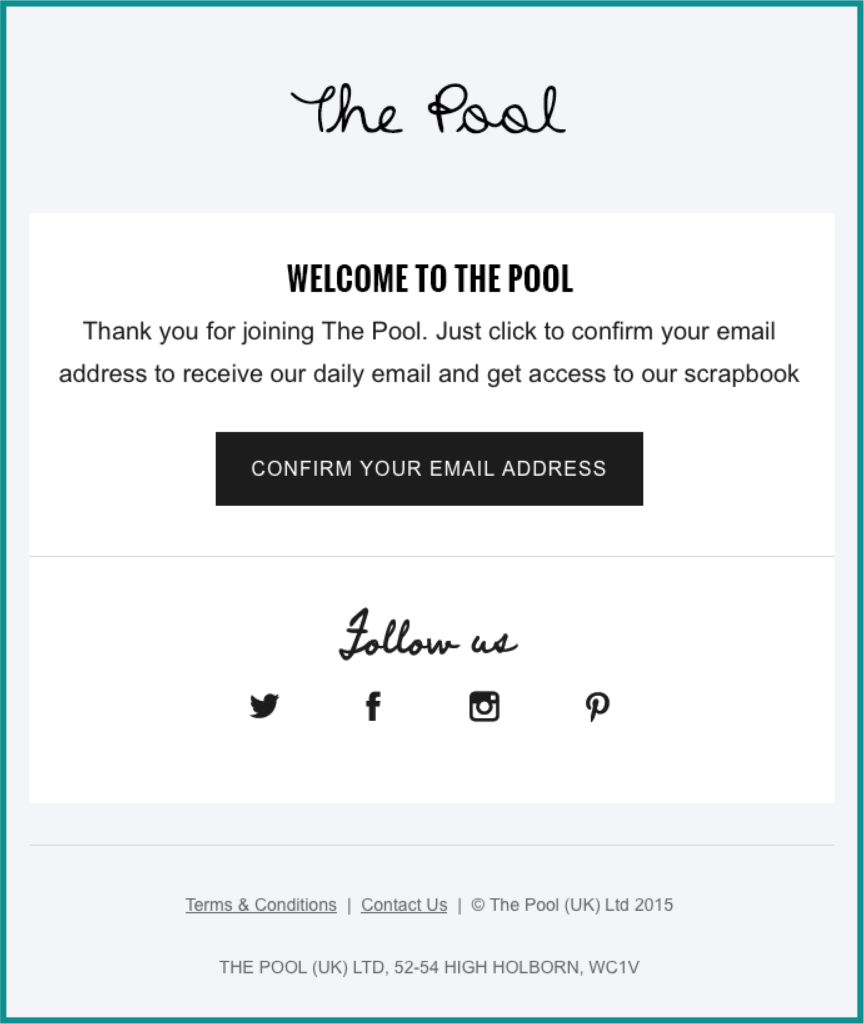
source: Pinterest
Make sure your email content clearly communicates the value proposition of your offer. Why should the recipient click on your CTA? What benefit will they receive? Make this value proposition clear and compelling within your email content to encourage clicks and improve the click-to-open rate.
Email automation refers to the process of sending automated emails based on specific triggers or actions taken by a subscriber. These emails can be highly targeted and personalized, helping to improve engagement and drive conversions.
When used effectively, email automation can play a crucial role in improving the click-to-open rate and the overall effectiveness of your emailing efforts.
Here are some examples of how email automation can be used to improve engagement and drive conversions:
A welcome email is the first email that a subscriber receives after signing up for your email list. It’s an opportunity to introduce your brand and set expectations for future emails.
By sending a personalized and engaging welcome email, you can start building a relationship with your subscribers and encourage them to engage with your future emails.
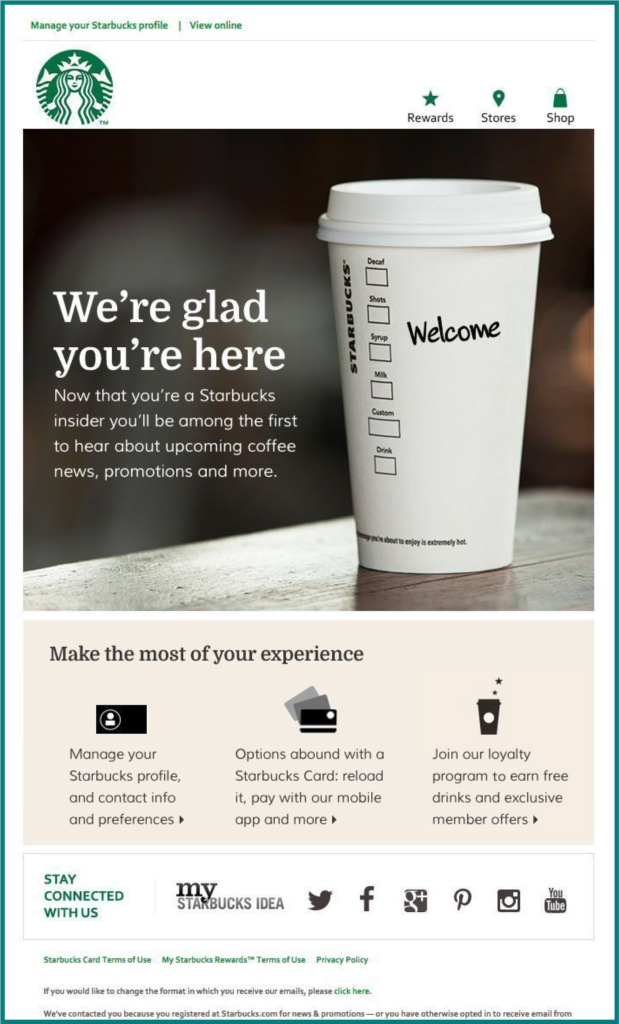
source: Pinterest
Abandoned cart emails are sent to subscribers who have added items to their cart but haven’t completed the purchase. These emails can be highly effective in recovering lost sales and improving the click-to-open rate.
By reminding subscribers of the items they left behind and offering an incentive or discount to complete the purchase, you can encourage them to take action and convert.
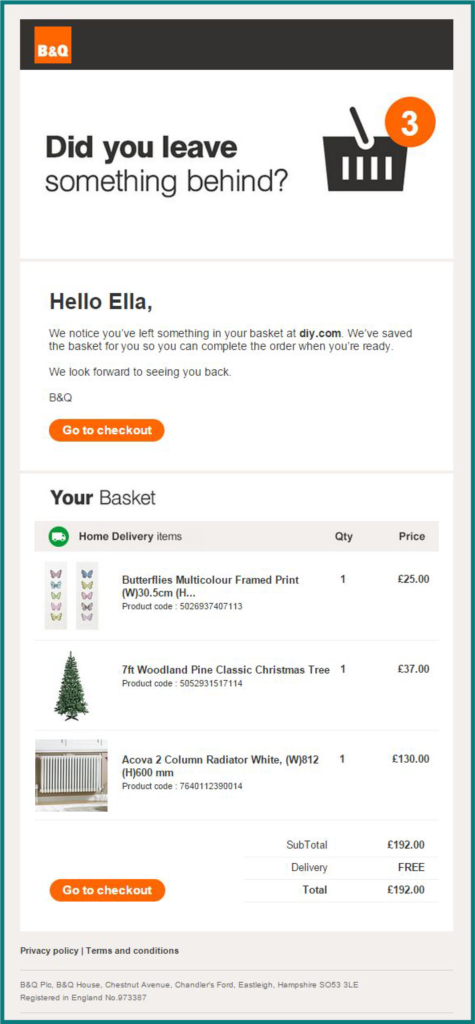
source: Pinterest
Re-engagement emails are sent to subscribers who haven’t engaged with your emails in a certain period of time. These emails can help you win back inactive subscribers and improve the overall health of your email list.
By offering a personalized incentive or reminder of the value of your emails, you can encourage subscribers to engage with your future emails and improve the click-to-open rate.
Drip campaigns are a series of automated emails that are sent over time based on a subscriber’s behavior or actions. These emails can be highly targeted and personalized, helping to improve engagement and drive conversions.
By providing relevant and valuable content to subscribers over time, you can build trust and loyalty and encourage them to engage with your future emails.
To get started with email automation, it’s important to define your goals and objectives and choose the right automation platform for your business.
You’ll also need to define your triggers and create targeted content and CTAs for each automated email. By taking a strategic approach to email automation, you can improve engagement and drive better results for your email marketing efforts.
Emaillabs uses specialized cloud-based servers to deliver your emails quickly and effectively. With this powerful email API, you will be able to send and track your emails, maximizing the accuracy and efficiency of your email marketing campaigns.
As an easily scalable service, it will suit various businesses regardless of their niche or size, all the while protecting you from any spoofing or scams, increasing the trustworthiness and reliability of your brand.
CyberLabs #1 – Phishing being one of the most popular cyber threats
Contact us if you want to achieve an average email delivery time of just 0.16 seconds!
Maximize your email deliverability and security with EmailLabs!
Click-to-open rate (CTOR) is a valuable metric for measuring engagement within an email campaign, but it’s important to understand its limitations and potential pitfalls. While a high CTOR can indicate that recipients are engaging with your emails, it doesn’t necessarily mean that those clicks are resulting in conversions or increased revenue.
To improve the click-to-open rate, it’s important to focus on creating engaging email content, optimizing email design, and testing and refining your email campaigns. By taking a strategic approach to email marketing and using data to guide your decisions, you can improve the effectiveness of your email campaigns and drive better results for your business.
However, you should remember that CTOR is just one metric and should not be used in isolation to measure the success of your email campaigns. It’s important to track other metrics, such as conversion rate, revenue generated, and customer lifetime value to fully understand the impact of your email marketing efforts.
By continually testing and refining your email strategy and keeping these limitations in mind, you can improve your click-to-open rate and drive better results for your business.
Gmail has announced significant changes in the requirements for email senders to maintain a good reputation and proper classification of messages in user inboxes starting from February 1, 2024....
Vercom S.A. public joint-stock company to which the EmailLabs project belongs, has been assessed and certified to be compliant with the ISO/IEC 27001 and ISO/IEC 27018 standards. The Vercoms’...
The increasing number of phishing attacks each year, and the projection that this trend will continue to escalate, aren’t likely to astonish anyone. This can be attributed, in part,...
Out of all the things that can go wrong when sending out marketing emails, having your emails end up in the recipient’s spam folder is arguably the most dreaded...
Email Authentication, Security
DMARC is an email authentication protocol that is designed to give domain owners the ability to protect their domain from unauthorized use, commonly known as email spoofing. Spoofing occurs...
With the emergence of the Covid-19 pandemic, many brands have been challenged to adapt in a short period to the changed reality and new consumer attitudes. That meant reorganizing...
Have you ever sent an email in haste and immediately wished you hadn’t? It happens more often than we’d like to admit. If you ever find yourself in this...
One safe and easy way to keep track of your digital interactions is to save emails as PDFs. However, do you know the best ways to easily turn your emails into PDF files? In this article, we’ll look into the different ways you can do to turn your emails into accessible PDF files. Let’s start! Key Takeaways To save emails...
Sending large files online can sometimes feel like maneuvering through a maze with unexpected twists and turns. The frustration of hitting attachment size limits or dealing with slow uploads...
Have you ever sent an email in haste and immediately wished you hadn’t? It happens more often than we’d like to admit. If you ever find yourself in this...
One safe and easy way to keep track of your digital interactions is to save emails as PDFs. However, do you know the best ways to easily turn your emails into PDF files? In this article, we’ll look into the different ways you can do to turn your emails into accessible PDF files. Let’s start! Key Takeaways To save emails...
Sending large files online can sometimes feel like maneuvering through a maze with unexpected twists and turns. The frustration of hitting attachment size limits or dealing with slow uploads...
Are you a bit baffled by email protocols like IMAP, POP3, and SMTP? Have no fear – this article is here to explain it all. If you have ever...
In 2024, global providers like Gmail and Yahoo have implemented a series of changes, primarily targeting bulk senders. These changes, already in effect, are part of a continuous update...
In the face of dynamic technological advancements and increasingly sophisticated cyber threats, ensuring network security has become crucial. Dozen security incidents present a challenge that we cannot afford to...
Google and Yahoo's Requirements
2024 marks a turning point in the fast-paced world of email deliverability, as this is the year when Google and Yahoo updated their sender requirements. With the enforcement period...
Best practices, Email Marketing
B2B email marketing – it’s a term you’ve likely heard before, but what does it really entail? And, more importantly, how can it be done effectively? In this article,...
Deliverability, Sending Reputation
Email sender reputation is one of the most important factors that can determine whether your emails reach the intended recipient or not. So, what is the email sender reputation,...